Photo
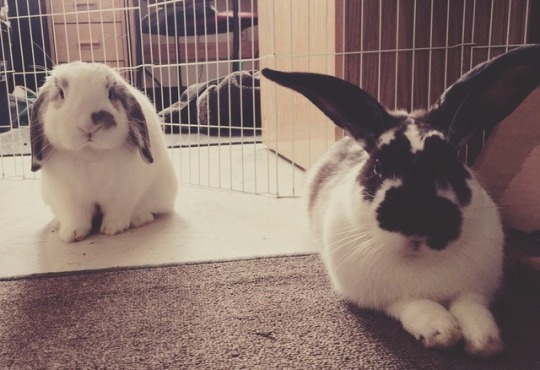
***DISCLAIMER: ALL OF THESE TIPS ARE MY OPINIONS ABOUT WHAT IS BEST BASED ON MY EXPERIENCE, SORRY IF ANY OF THIS OFFENDS YOU***
Contrary to popular belief, people do read my blog (despite it being mostly uninteresting because it’s about my life) and a lot of readers have requested that I make an article about my bunnies. Primarily, I was going to make an article about why bunnies make great pets, but a really good friend of mine and fellow bun-mom Carolyn Allen brought up the point that rabbits are great pets only when their owners are educated and dedicated. Rabbits are not easy to take care of and should never be considered a starter pet. They are great pets because, with a lot of hard work and attention to detail, their companionship is completely worth the struggle.
So I’m going to cover a ton of information in this article, feel free to skim through and PLEASE message me if you have any questions/concerns/changes you’d like to make.
Part I: Housing
A rabbit’s living space is arguably the second most important aspect of their care (next to diet), but should be the first thing you consider when you decide that you’re interested in adopting a rabbit because if you don’t have the room for one, just straight up don’t get one.
So, what is an acceptable living space for a rabbit and what is just inhumane, cruel, and downright stupid?
For starters, if you are imagining keeping your rabbit in a wire cage, critter keeper, or any kind of store bought colorful cage with shelves- go ahead and just never have a child or pet or plant or anything alive under your care. Most habitats advertised at Petsmart, Petco, etc. are just absolute garbage and should be abolished. These are NOT suitable for animals- rabbits, guinea pigs, mice, rats, chinchillas, hamsters. NO. DO NOT DO IT. THEY ARE MADE FOR HUMAN CONVENIENCE, NOT ANIMAL SATISFACTION.
So, what, your rabbit gets his own walk in closet and sleeps in your bed with you? Also not the case.
Can I keep my rabbit outside? I know that a lot of people do keep their rabbits outside in hutches/pens/grassy areas. Should you take your rabbit outside? Sure, your rabbit might enjoy himself. Should your rabbit live outside 24/7? No. Rabbits are very sensitive to hot climates and can even freeze to death outside in extreme temperatures.
Would you leave your dog outside 24/7, or your cat? No, and if you do, you’re arguably a terrible person, regardless if your dog/cat “loves the outside!!”, and you should allow your pet access to the indoors at all times. Rabbits are indoor pets and, although they can be taken outside to roam and play, you should provide proper accommodations for them in the comfort of your own home. Have an outdoor hutch/pen and want to let your rabbits enjoy the cool morning while you supervise with your cup of coffee? Yes, lovely. Just make sure you bring them back inside with you.
The absolute SMALLEST enclosure I would recommend is a large playpen for dogs. When I first got my rabbits, I lived in a college dorm (a story for another time) and I sectioned off half of the entire room with a playpen gate for them to enjoy. I got half of the room, and they got half of the room. You don’t have to dedicate all of your space to them, and I would even say that keeping them in the playpen or exercise pen while you’re not around to supervise their bun activities is totally acceptable (assuming that you’re not leaving them in there 24/7 and you’ll be home often enough for them to run around in a room or your house for extended periods of time).
You should bun-proof the areas that your rabbits will have access to, which means putting up cords and cables, putting fencing around wood that they might chew, and picking up any items they might ingest.
Here’s a great article about proofing your house: http://wabbitwiki.com/wiki/Bunny-proofing
Your rabbit should get a lot of time to run around a room or an enclosed area with carpet or some sort of surface they can run on (foam floor tiles, old carpet, etc). Rabbits do not have padded feet like cats and dogs and do not have traction on hardwood floor- only giving them access to wood or tile surfaces to run on will hurt their legs and feet in the long run, although my guys love to lay on the cool tile occasionally in the kitchen.
Your rabbit will also appreciate having accessories to his enclosure. The best and cheapest stuff is the items that are made for cats (beds, tunnels, things to hide in). I give my guys a long tunnel with lots of entrances to run in and they absolutely love it. You can buy really cute toys for them to play with that will keep their teeth healthy, too! I also give them cardboard boxes with no tape or dark ink printed on to play in/chew up, and cardboard toilet paper/paper towel rolls to play with.
Look on Pinterest and the internet for housing inspiration. At the bare minimum, your bun’s pen should room to run around in, tunnels/toys, a litter box with a hay feeder hanging above it, and a water and pellet dish.
For my rabbits, they have my entire carpeted bedroom to run around in. I also have a custom built hutch for them that doubles as a large shelf that I keep my mirror and other items on. I just close the door when I’m not home so that the dogs won’t bother them, and when I’m home to supervise, they have free roam of the house and love to sit on the couch.
Part II: Saving Up, Adoption & Veterinary Care
Rabbits, in my opinion, can have pretty intense start up costs, but are relatively cheap and easy to maintain once they’re settled in (assuming all goes well and normal). Before getting a rabbit, make sure you find a good veterinarian that specializes in rabbit care. My buns go to the Glenway Animal Hospital in Cincinnati, OH. When I first got Henry and Moose, I spent almost $1,000 on veterinary costs. They had a pre-surgery checkup, both had their nails trimmed (which should be done monthly, usually costs about $20 per rabbit), and both were neutered, which was about $450 a piece.
Getting your rabbits spayed and neutered MATTERS- even if you’re not housing your rabbit with another rabbit of the opposite sex. Fixed rabbits can live up to 13 years compared to a rabbit that is not fixed that will only live to be about 5 or 6 years, as rabbits are susceptible to a lot of reproductive issues and cancer. Hormones that rabbits have naturally that make them territorial or mean can also be flushed out by getting your rabbit fixed. For example, male rabbits will spray their urine in your house to mark their territory if they are not neutered and hump other rabbits/you to show dominance. Ever been sprayed in the face with rabbit urine? It is possibly the worst thing I have ever encountered. Fix your animals.
So why would you want a pet rabbit if it’s gonna cost you $600+?
Well it isn’t! Rabbits that are up for adoption in sanctuaries and rescues are usually already fixed, vet checked, and up to date on shots. That leads me into my next point, ADOPT DON’T SHOP. Check out PetFinder and local rescues that have rabbits that need homes. You will save HUNDREDS of dollars by opening your home to a rabbit that has been in the shelter instead of a rabbit from a rabbitry or breeder.
However, there are some expenses that rescues won’t cover, and that includes supplies (food, fencing, toys, litter, litter boxes, water and food dishes, etc), so I would recommend saving up around $150+ just to be safe when you first get your rabbit because you never know how many emergency trips to Petsmart you’ll have to make for comfy fleece blankets and toys to play with.
Part III: Research
Again, before you ADOPT your new bun, PLEASE do research outside of this article.
http://wabbitwiki.com/wiki/Getting_started_with_a_rabbit
http://wabbitwiki.com/wiki/Vegetables
http://wabbitwiki.com/wiki/Housing
http://wabbitwiki.com/wiki/Bunny-proofing
Watch YouTube videos, join Facebook groups (Rabbit Owners Community is a great Facebook group with tons of good advice), and just google your questions.
You’ll learn lots of things from just watching funny videos, like when to tell if your bunny is happy.
Fun Fact: Rabbits “sploot”, or put their hind legs behind them when they lay down, flop on the floor, and “purr” (chatter their teeth together lightly) when they’re happy. When rabbits are SUPER happy, they will jump and kick around, which is called binkying. Look up videos of binkying, you won’t be disappointed.
Part IV: Diet
So, congrats, you adopted a rabbit! He’s at your house, in your special bunny proofed area, and now you should probably feed him! Rabbits have the three main food groups:
Hay: Your bunny should be given an unlimited amount of timothy hay- and by unlimited, I mean your bun should ALWAYS have access to hay, so their little hay rack or bin should always have hay in it. Hay helps a bun’s digestive system and keeps everything processing correctly, and also helps grind their teeth down so that they don’t grow too long. Rabbits don’t possess the ability to throw up, so if something goes wrong in their digestive tract, they won’t be able to get it out and could potentially die. The best brand for any bun food/hay is 100% Oxbow. This is the only brand I use and recommend.
Pellets: I feed my buns ¼ cup each once a day of Oxbow brand timothy hay pellets. The pellets add extra vitamins and nutrients into their diet, but should be fed sparingly based on weight.
Weight (lbs)..... Amount of Pellets
1-3..... ⅛ cup
4-7..... ¼ to ⅓ cup
8-10..... ⅓ to ½ cup
10+..... ¾ cup
Veggies: Once a day buns should be given a little salad to eat. They should be given one one cup of packed greens per every two pounds of rabbit. I give my buns a handful of greens each with a small amount of shredded carrots on top, considering they are between 5-6lbs each.
http://wabbitwiki.com/wiki/Vegetables
A bun’s diet should consist mainly of hay. However, there are some treats you can give to your rabbits occasionally, like fruit or store bought hay treats. BE AWARE, treats like fruit can be extremely high in sugar and bad for your rabbit if fed in large quantities or too often.
Let’s talk about water. In the wild, rabbits usually drink out of water bottles attached to their wire cage walls. Okay, now that you can see how stupid that sounds, why would you make your rabbit drink out of a water bottle if it’s unnatural? Give your rabbits a water dish (preferably a heavy ceramic one so they won’t flip it over for fun) and just refill it a few times a day- being a rabbit is thirsty work.
Part V: Litter box & Cleanliness
Rabbits can be pretty disgusting when they’re kept in a small cage with no choice but to stand in their own feces and urine all day in shredded paper litter- which is why we don’t keep them in small cages that double as a litter box! Rabbits can be litter box trained! If you clean your rabbit’s litter box regularly and use proper litter, rabbits don’t smell at all and are similar to cats when using the bathroom.
You can use a regular cat litter box, but I would recommend this special one made for rabbits. The screen on top keeps them from digging at the litter and can be used to clean out poops much more easily.
Pine litter is recommended by almost every single rabbit owner I know. It is literally $5-6 for a 40lb bag of litter, which lasts me about a month (I change my rabbits’ litter once every week or so, and they have 3 litter boxes). It also smells SO much better than any rabbit litter that is “made for rabbits” and lasts much longer.
Despite being litter trained, my rabbits do have accidents occasionally, and I do find little poops in my room. So how do I keep my room from smelling awful and being disgusting?
I clean it (imagine that)!
For urine, I use a urine eliminator spray on the spot after dabbing up most of the moisture with a towel. If you don’t wanna fork out that much money for pee spray, I would also recommend water + white vinegar in a spray bottle and a little baking soda on top of the stain. It smells like vinegar at first but goes away really quickly and helps with any pee smell/stain.
For cleaning up poops, I bought this life saving vacuum. I can’t imagine my life without this thing, it is seriously a huge blessing.
Part VI: Personal Experience
My personal story with rabbits has fortunately been very easy. I got Henry and Moose from a really great girl who didn’t have the time to care for them anymore due to her moving on up in her career. I had just gotten out of a relationship and I was, of course, making tons of impulse decisions. I never had experience with rabbits, I just said “I’ll take them” and then I was launched into parenthood. I got extremely lucky with Moose and Henry. They are the most well behaved and socialized rabbits I have ever seen. They barely chew on anything besides their toys, they are litter box trained, they can free roam with my dogs and coexist peacefully, they’re both really good eaters and aren’t picky at all, and they’re so friendly. Henry even grooms me when I sit next to him. A lot of rabbit owners don’t get as lucky as I am and will get rabbits that are timid and need extra love and attention, and that’s okay! Being a bun parent takes a lot of effort, but it is seriously worth it for all the love you’ll receive back.
PLEASE message me with comments/concerns/questions/additions to this article, I love to hear from everyone and I would be more than happy to recommend rabbit adoption facilities and veterinarians!
0 notes
Photo
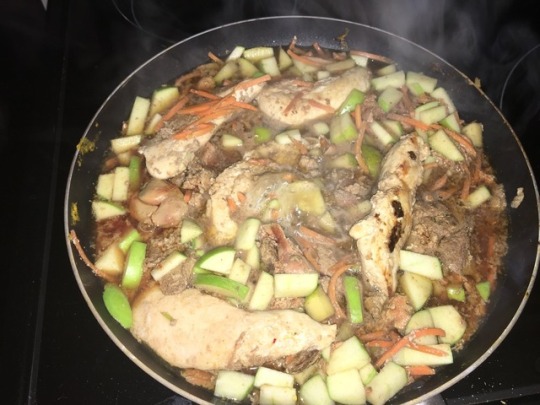
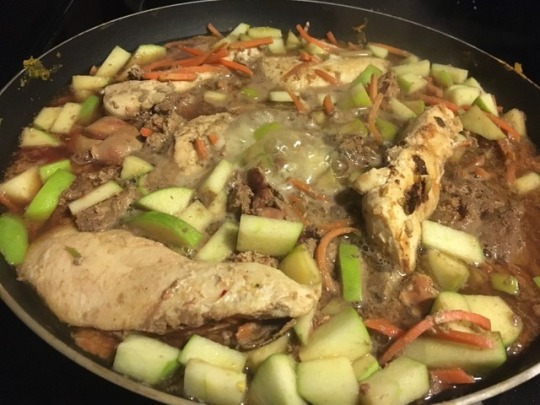
**CONTROVERSY AHEAD**
I’ve said it once and I’ll say it again- feeding your animals REAL food is one of the most, if not the most, important responsibilities you have as a pet owner. In this post I’ll be talking about why feeding your animals “people food” is essential to your pet’s lifestyle.
I’m primarily going to be talking about my dogs’ diet in this post, as it should already be known that my rabbits and snake all eat fresh food (fresh greens/hay and live rats).
Recently (as in the last decade or so), society has been coming to their senses about the ingredients, cancer-causing chemicals and fillers, dog food brands such as Purina or Iams include in their kibble. Kibble is made for human convenience and is not suitable as the only source of food for your dog.
Not all kibble brands are necessarily bad for your dog. I feed my dogs kibble to make sure I am including any vitamins and minerals that their “real food” diet might leave out, and the crunchy kibble works to promote dental health. This does NOT mean that feeding your dog ONLY kibble every day is a good idea whatsoever. I recommend grain-free, meat based kibble with no corn, wheat or soy additives. Blue Buffalo is a great brand for this, but if you’re ballin’ on a budget like I do, I use Nature’s Recipe products, which are almost identical to Blue Buffalo, but sometimes include potato or chicken meal (which has 300% more protein than just chicken).
So now that we have the base of my dogs’ meals, let’s move on to what we see in the photographs I attached to the post. On top of kibble, I meal prep for my dogs in large quantities about two times a week. THIS IS RELATIVELY CHEAP AND EASY, WHICH MEANS THAT EVEN THOSE OF US THAT ARE BALLING ON A BUDGET CAN AFFORD TO KEEP OUR DOGS HEALTHY AND GIVE THEM A PROPER MEAL. You can make this in the crockpot for the low price of ~$12 a week.
- Chicken Livers ($1.49/container at Kroger, I use about 2 containers weekly)
- Chicken Thighs (Depending how many you get, can be around $5 or less)
- Apples (5/$2 at Kroger)
- Carrots ($0.99 at Kroger for a bag of shredded carrots)
- Water (Free)
I make all of this in the crockpot about once or twice a week- IT TAKES LITERALLY NO EFFORT. Then I top off my dogs’ food with this mix and pour some of the liquid broth that has formed on top of their kibble. The liver and thighs are full of great antioxidants and vitamins*, the apples keep their teeth clean and healthy and make their breath smell good, and the carrots are also rich in nutrients and promote dental health.
There is no reason your dog should be consuming processed food as their only source of sustenance. This goes for ALL animals under your care- DO NOT ADOPT ANIMALS IF YOU CANNOT AFFORD TO FEED THEM PROPERLY. It is unfair to your pet and can potentially cost them their life.
* Too much liver in your dog’s diet can have negative side effects. Read below under “Pros and Cons”
LINKS
> About Kibble:
Brands of Kibble to Avoid
About Blue Buffalo Products
Ingredients of Nature’s Recipe Kibble
> About Real Food:
Pros and Cons about Feeding Your Dog Liver
0 notes
Video
Update: after 2 hours, I discovered that Gil was hiding underneath his water dish the entire time to cool off 🙃 #being #a #zookeeper #is #stressful
0 notes
Text
06/06/18
10am on this beautiful Wednesday morning and I've spent the last hour searching for Gil the Snek because he escaped in my room :-) super fun so far as a snake owner 0/10
0 notes
Photo



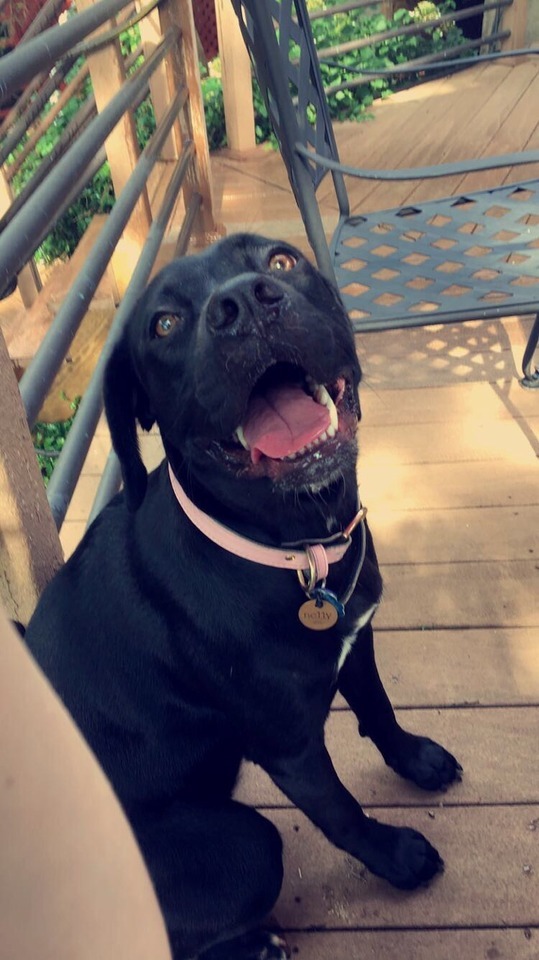
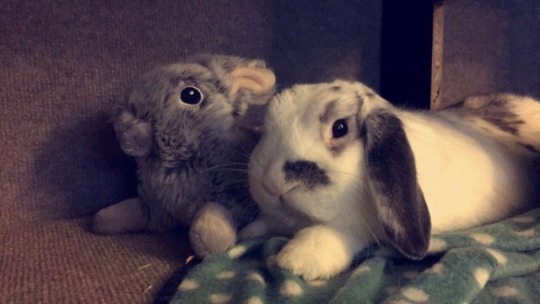
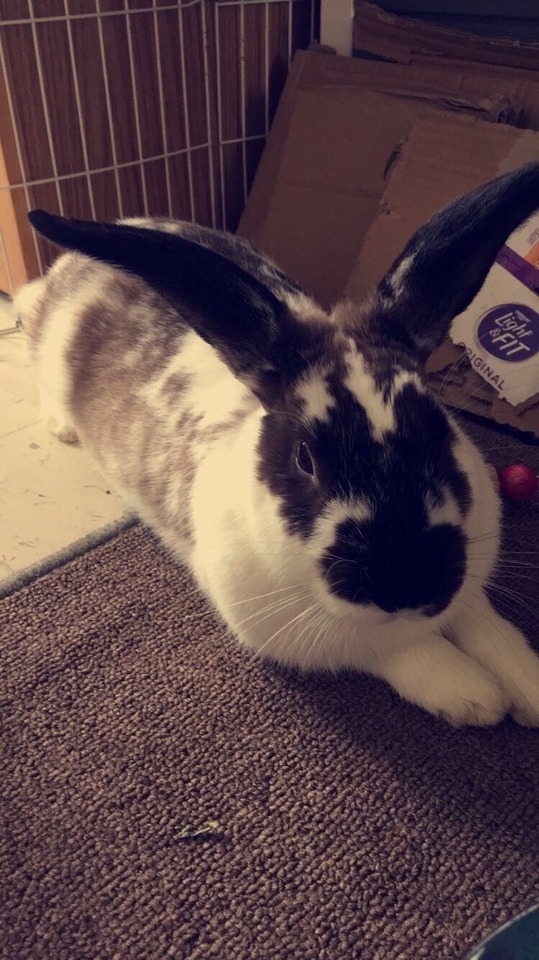
To start off, I think it’s probably beneficial for everyone to learn who’s who on this blog. My blog posts will hopefully never be this long, so I’m sorry in advance for this novel I’m about to write.
The first gif of the blue fish with the skull is Gordon Ramsey, my beta fish. I actually took him in when his owner bought a different beta fish and decided that the new fish was “prettier than Gordon”, and was giving him away. Beta fish are extremely smart and can even jump through small hoops, but Gordon is smart enough to recognize that I am in front of the tank and about to feed him. 10/10 great guy.
The second gif includes my two oranda goldfish, Hefeweizen and Pilsner. Not rescues, just pet store fish that were brought home a little over a year ago. Also recognize when you are in front of the tank and always get a little more lively when the TV is on.
The third image is of the newest addition to the house, Rosie. Rosie is a two-and-a-half month old labrador retriever/border collie mix that I was given from an accidental litter- she was not getting adopted because she was the runt. I adopted her as a companion for my other dog, Nelly.
Next is a picture of my cane corso (Italian mastiff)/labrador retriever mix, Nelly. Nelly is my ride or die, my number one, my prized pig. I rescued her from a life of neglect and ignorance from an accidental litter (where she was the runt, too), and she was not adopted until she was 7 months old and had not been properly socialized at all. We had to teach Nelly how to play with toys, go up stairs, and walk on a leash. Special shoutout to everyone who has ever met Nelly and shown her nothing but patience, compassion, and kindness. She is such a sweet girl, but sometimes can be a pain due to her lack of socialization as a puppy.
The white and gray bunny, Henry (mini lop), is one of my two bonded rabbits that I received from someone who no longer had the time to care for them. He is honestly the nicest animal I have ever come in contact with. He has shown me nothing but unconditional love and affection since I first met him. He loves people, going outside, and chasing around Moose.
Moose is the second rabbit in the bonded duo and is brown and white. I was told he is also a mini lop rabbit, the same type as Henry, although his ears are not as floppy as Henry’s, so I have reason to believe he is mixed with a different kind of rabbit. He is full of energy and constantly needs mental stimulation. He loves to zoom around my room and under my bed, and snuggle up next to Henry when it’s time for bed.
Finally, the newest addition to the family (who isn’t pictured because he is a bit camera shy) is Gil the ball python, otherwise known as Udon. Gil is between one and two years old, and came from a home where too many other animals were present, and the mother of the household was too afraid to take care of Gil properly. Gil is not shy, but he prefers to keep to himself and hang out in the hot spots of his enclosure. He occasionally checks on the rabbits to decide if they’re small enough to eat yet, but he is always disappointed to find that they are 3x his size.
In this blog, I’m hoping to talk about how I care for my animals and all the wonderful memories and challenges they bring to my life. Comment on my posts with requests for blog entries/questions/general comments (: thank you!!
0 notes